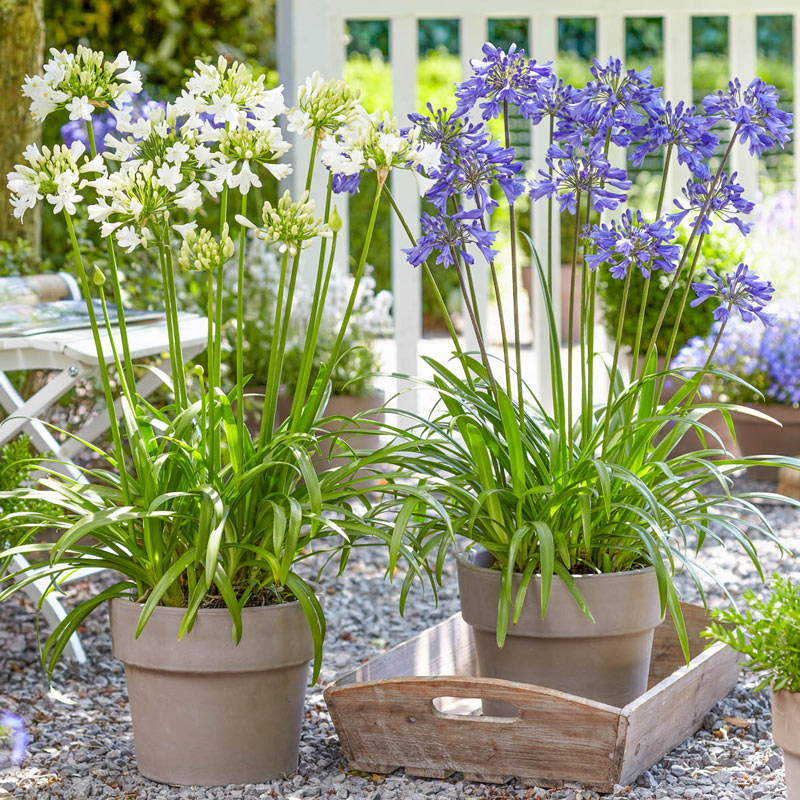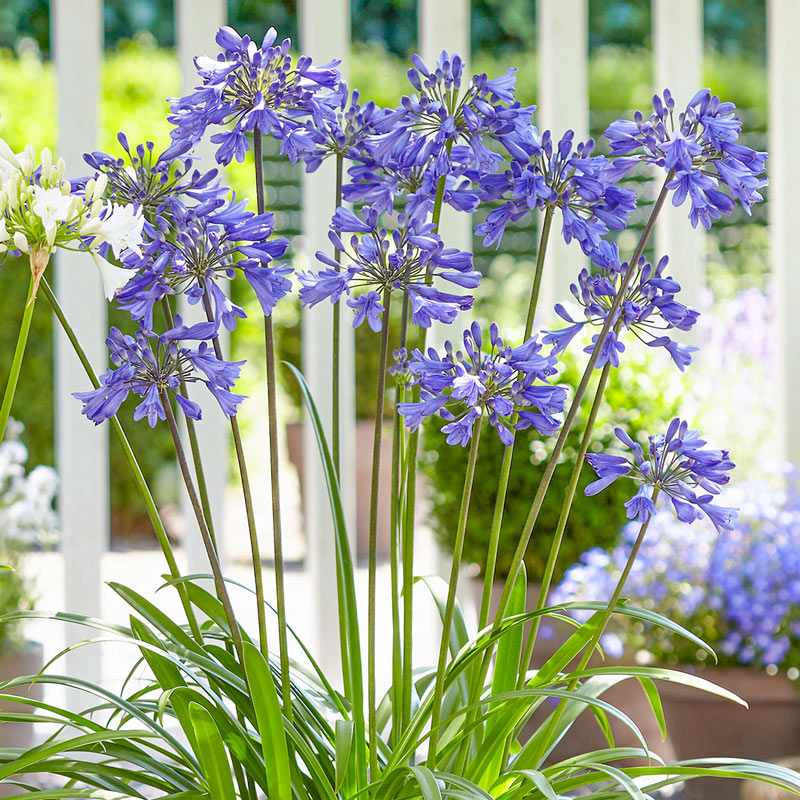Growing Agapanthus: A Complete Overview to Beautiful Blooms
Growing Agapanthus: A Complete Overview to Beautiful Blooms
Blog Article
Understanding the Art of Agapanthus Care: Important Actions for Healthy And Balanced Growth and Vibrant Blooms
In the world of cultivation, the cultivation of agapanthus stands as a rewarding venture for those that seek to support these elegant flowering plants. With their striking blooms and graceful foliage, agapanthus has actually caught the attention of gardeners worldwide. Nevertheless, accomplishing ideal development and vivid blooms needs a nuanced strategy that includes different vital steps. From choosing the appropriate variety to mastering trimming strategies, the journey in the direction of growing thriving agapanthus plants is complex and holds the crucial to unlocking the full potential of these herb gems.

Selecting the Right Agapanthus Range

When choosing the right Agapanthus selection for your garden, consider variables such as climate suitability, blossom color, and development habit. Agapanthus, commonly called Lily of the Nile or African lily, comes in a selection of shades varying from tones of purple and blue to white. Select a flower color that complements your existing garden palette to produce a harmonious landscape. Additionally, consider the environment in your region to make certain the Agapanthus variety you choose can thrive in your certain problems. Some selections are much more tolerant of cool temperature levels, while others prefer warmer climates. Recognizing the growth habit of different Agapanthus selections is important for correct placement within your yard. Some selections have a clumping development practice, suitable for containers or boundaries, while others have an even more spreading nature, suitable for ground cover or mass growings. By very carefully reviewing these elements, you can pick the best Agapanthus variety to boost the appeal of your yard.
Suitable Growing Conditions
Thinking about the optimal environmental demands is necessary for successful Agapanthus growing. Agapanthus grows in well-draining dirt with a slightly acidic to neutral pH level. When planting, select an area that obtains complete sunshine to partial color. In hotter climates, offering some afternoon color can avoid scorching of the fallen leaves. Agapanthus plants are sensitive to cold temperature levels and should be protected from frost throughout winter months.
To make sure healthy and balanced growth and vivid flowers, plant Agapanthus light bulbs at a depth of concerning 2-4 inches and room them 8-12 inches apart. Mulching around the base of the plants aids keep moisture and reduces weed growth.
Watering and Fertilizing Tips
Keeping proper moisture degrees and giving essential nutrients are essential aspects in the treatment program for Agapanthus plants. When it comes to watering Agapanthus, it is essential to find more info strike a balance. These plants favor regularly wet soil yet are prone to root rot if overwatered.
Fertilizing Agapanthus is important for promoting healthy development and prolific flowers. Use a well balanced fertilizer, such as a 10-10-10 formula, in the early spring as new growth emerges. Repeat this application every 6-8 weeks throughout the expanding period. Stay clear of extreme fertilization, as it can result in rich foliage at the cost of blossoms. Always adhere to the producer's instructions for proper dilution and application techniques. By complying with these watering and fertilizing tips, you can guarantee your Agapanthus plants grow and generate lively, durable blossoms.
Trimming Strategies for Agapanthus
Pruning Agapanthus plants at the appropriate times and with correct strategies is essential for maintaining their health and promoting ideal growth and blooming. The optimal time to trim Agapanthus is in late winter useful link season or very early spring before brand-new development arises.
Deadheading spent blossoms can also redirect the plant's power right into generating even more flowers rather than setting seeds. If you want to gather seeds for proliferation, leave some flowers to mature and completely dry on the plant.
Bear in mind to use clean, sharp devices to make accurate cuts and minimize the risk of presenting diseases. Agapanthus. Routine trimming will assist maintain your Agapanthus looking healthy and balanced and cool while making certain an abundant display of attractive flowers
Taking Care Of Typical Pests and Illness
After ensuring proper trimming methods for Agapanthus, it is important to attend to common insects and conditions that can impact the wellness and vigor of these plants. Agapanthus plants are normally durable but can still come down with certain problems. One usual bug that influences Agapanthus is the Agapanthus gall midge. This small, orange fly lays its eggs in the vegetation, resulting in distorted development and blossom buds that fall short to open. To fight this insect, prune and damage any damaged plant components and consider using insecticidal soap.
In addition, Agapanthus plants can endure from origin rot if they are planted in poorly draining soil. By being attentive and taking timely activity against insects and conditions, you can aid your Agapanthus plants prosper and generate lively blooms. Agapanthus.

Verdict
In verdict, mastering the art of agapanthus care entails picking the right variety, supplying perfect planting conditions, appropriate watering and feeding, ideal pruning techniques, and addressing usual insects and diseases. By following these important steps, you can guarantee healthy development and lively blooms for your agapanthus plants. Keep in mind to routinely keep an eye on and keep your plants to advertise their overall wellness and durability.
To make certain healthy and balanced growth and vivid blossoms, plant Agapanthus light bulbs at a depth of regarding 2-4 inches and space them 8-12 inches apart. By complying with these watering and fertilizing tips, you can guarantee your Agapanthus plants thrive and generate vibrant, lasting blossoms.
One common parasite that affects Agapanthus is the Agapanthus gall midge. Furthermore, Agapanthus plants can suffer from origin rot if they are planted in badly draining dirt. By following these vital steps, you can ensure healthy growth and vibrant flowers for company website your agapanthus plants.
Report this page